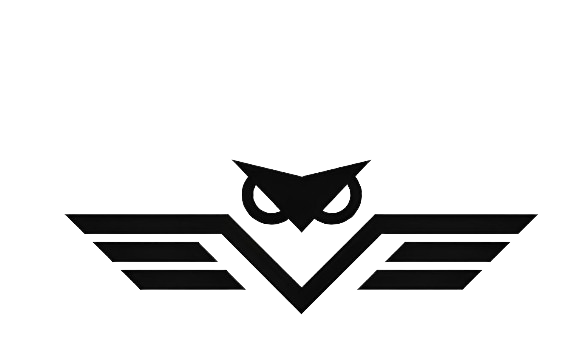In 1 machine 5 functions
Laser: Cleaning, Welding, Cutting, Melting, Seams cleaning
Laser: Cleaning, Welding, Cutting, Melting, Seams cleaning
- Welding with wire
- Welding without wire (melting)
- Surface cleaning from rust and paint
- Beard (Seams) cleaning/polishing
- Cutting

Model | 1500B | 2000B | 3000B | 6000B |
Laser power (W) | 1500 | 2000 | 3000 | 6000 |
Laser wavelength (nm) | 1064 | 1064 | 1064 | 1064 |
Working mode | Continuous Laser | Continuous Laser | Continuous Laser | Continuous Laser |
Modulation frequency (KHz) | 5 | 5 | 5 | 5 |
Cleaning footprint width (mm) | 120 | 120 | 120 | 120 |
Cutting capacity (mm) | 4 | 5 | 6 | 8 |
Welding thickness(mm) | 6 | 8 | 10 | 16 |
Welding seam width(mm) | 4,5 | 8 | 8 | 12 |
Cooling type | Water chiller: Built-in model | Water chiller: Built-in model | Water chiller: Built-in model | Water chiller: Built-in model |
Weight (kg) | 130 | 160 | 230 | 340 |
Dimensions (cm) | 98x49x81 | 98x49x81 | 120x65x96 | 120x65x96 |
Wire feeding size (mm) | 0,8 - 2,0 | 0,8 - 2,0 | 0,8 - 2,0 | 0,8 - 2,0 |
Fiber cable length | 15 | 15 | 15 | 15 |
Duty time loading (h) | 24/7 | 24/7 | 24/7 | 24/7 |
Electricity | 1P 220V 50Hz 6kVA | 1P 220V 50Hz 8kVA | 3P 380V 50Hz 11kVA | 3P 380V 50Hz 15kVA |
Gas source | Cleaning mode - CDA Welding/Cutting - Nitrogen/Argon | Cleaning mode - CDA Welding/Cutting - Nitrogen/Argon | Cleaning mode - CDA Welding/Cutting - Nitrogen/Argon | Cleaning mode - CDA Welding/Cutting - Nitrogen/Argon |
When you choose our Laser machines, you're investing in quality, reliability, and performance. Our dedication to selecting and integrating top-tier components ensures that you get the most out of your laser machine, every time.
Join us on this journey to raise the standard of laser technology. Discover the power of excellence in every component with ANYTEK-FZCO.

Best reliable laser sources
with different power 1000/2000/3000/6000W

1 or 2 Axis Multifunctional hand gun, with replacing nozzles for different processes

Powerfull water chiller (Hanli)
Independent water tank switch;
Imported temp. control system.
Built-in chiller

Touch Screen Controller
with 16 Languages

Auto Wire Feeder for welding
single or double wire configuration

while upgrading your factory or workshop?
- Reduced Labor CostsSay goodbye to the need for too many workers for cleaning tasks. Laser welding cleaning machines automate the process, saving you money on labor.
- Lower Consumable ExpensesTraditional cleaning methods can gobble up your budget with chemicals and replacement parts. Laser machines are more efficient and require fewer consumables.
- VersatilityThese machines can clean various surfaces, from metals to delicate materials, making them ideal for a wide range of applications.
- Increased ProductivityLaser machines work lightning-fast, boosting productivity. Finish tasks quicker, freeing up time for more projects or other essential work.
You also tired from traditional welding processes?
-
ARC/MIG/TIG WELDING REQUIRED
EXPLORE- Welding requires a certain level of skill and training to produce high-quality welds. Welders must have a good understanding of welding techniques, electrode selection, and proper settings for the welding machine. Inexperienced or untrained welders may produce weak or defective welds.
- Limited Joint Accessibility: Arc welding can be challenging in situations where the workpiece has limited accessibility. It may be difficult to position the electrode and maintain the arc in confined spaces or complex geometries.
- HAZ (Heat Affected Zone) - with traditional welding most of the times welded materials have heating deformation.
- Performance - traditional welding have less performance then laser in 20-30 times.
- Finishing processes - traditional welding required finishing processes: Grinding, polishing, cleaning
You also tired from traditional cleaning processes?
-
Sandblasting?
EXPLOREEnvironmental Concerns: Sandblasting generates dust and debris containing abrasive materials, which can be harmful to the environment and pose health risks to workers if not properly controlled and contained.
Surface Damage: Depending on the abrasive material and pressure used, sandblasting can potentially create surface roughness that is too aggressive for some applications, leading to excessive material removal and potential weakening of the steel.
Limited Precision: Sandblasting is not ideal for precision cleaning tasks because it can be challenging to control the depth and uniformity of material removal, making it less suitable for delicate or intricate surfaces.
-
Waterjet Cleaning?
EXPLOREEquipment Cost: High-pressure waterjet equipment can be expensive to purchase, operate, and maintain. This cost can be a significant factor for small-scale operations.
Surface Profile Control: Achieving a specific surface profile or roughness with waterjet cleaning can be more challenging compared to abrasive methods like sandblasting, which can limit its suitability for certain coating applications.
Waste Water Management: Waterjet cleaning generates wastewater, which may contain contaminants and require proper disposal or treatment, adding to the overall cost and complexity of the process.
-
Mechanical Polishing?
EXPLORELabor-Intensive: Mechanical polishing is a labor-intensive process that may require skilled operators and longer processing times, leading to higher labor costs.
Limited Removal of Deep Contaminants: It may struggle to remove deeply embedded contaminants or rust, which could remain beneath the surface and compromise the effectiveness of subsequent coatings.
Surface Consistency: Achieving a perfectly uniform and consistent surface finish can be challenging, particularly on large or complex steel components.
In recent years, laser cleaning has emerged as a cutting-edge and environmentally friendly alternative to traditional methods for surface preparation and cleaning, particularly for steel and various other materials. This innovative technology utilizes the power of laser beams to remove contaminants, coatings, rust, and other undesired materials from surfaces efficiently and with a high degree of precision. Laser cleaning offers several advantages over traditional methods, making it an increasingly popular choice in various industries.

Contact us





